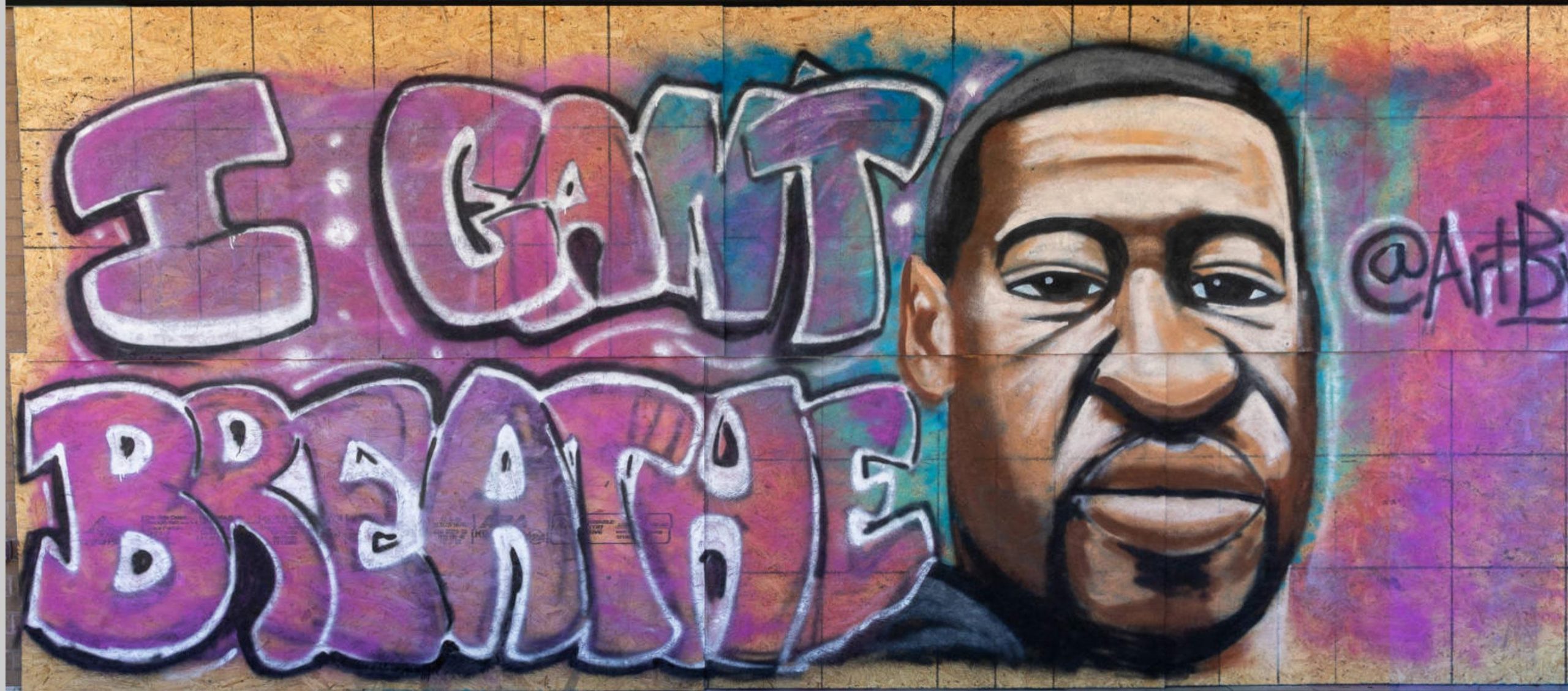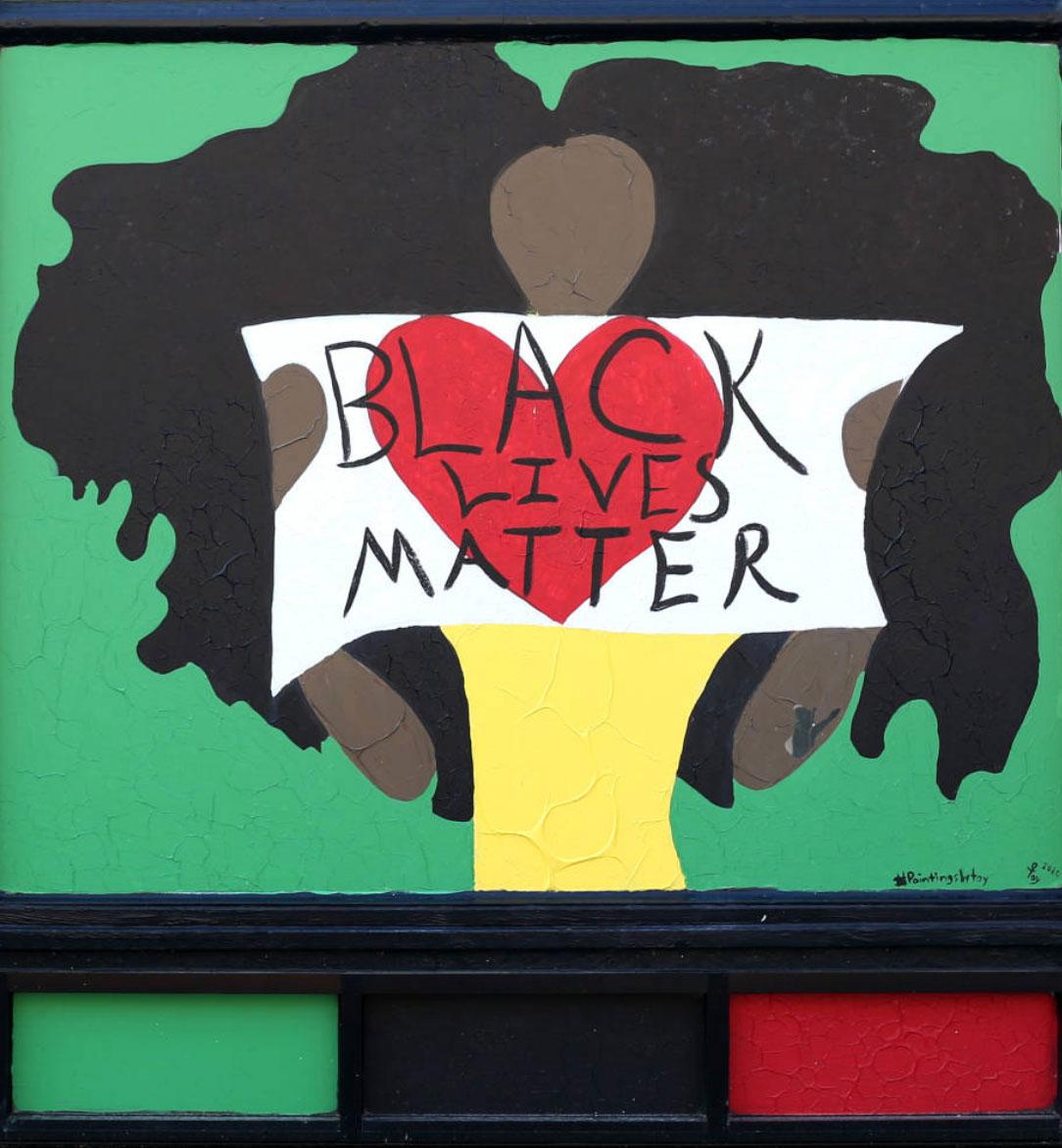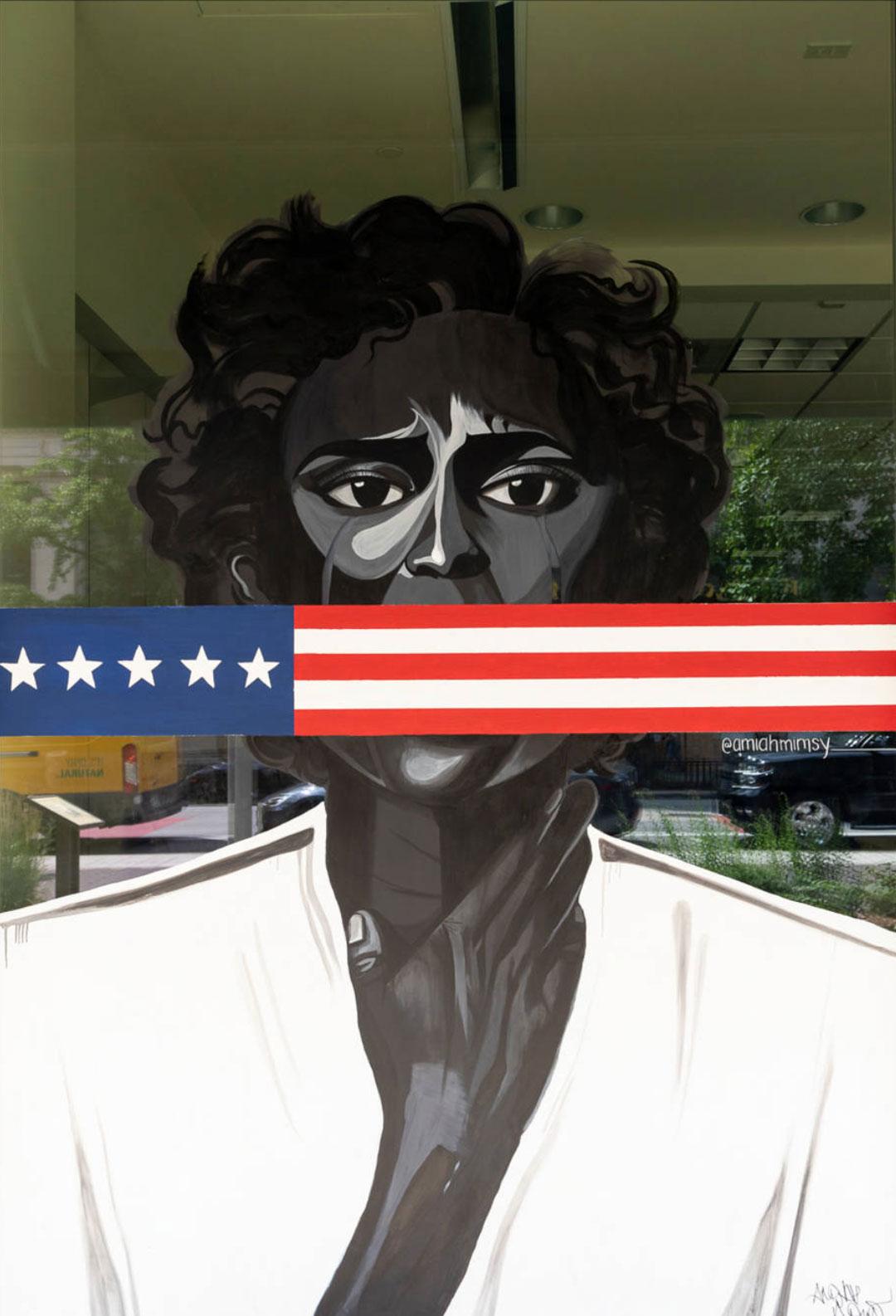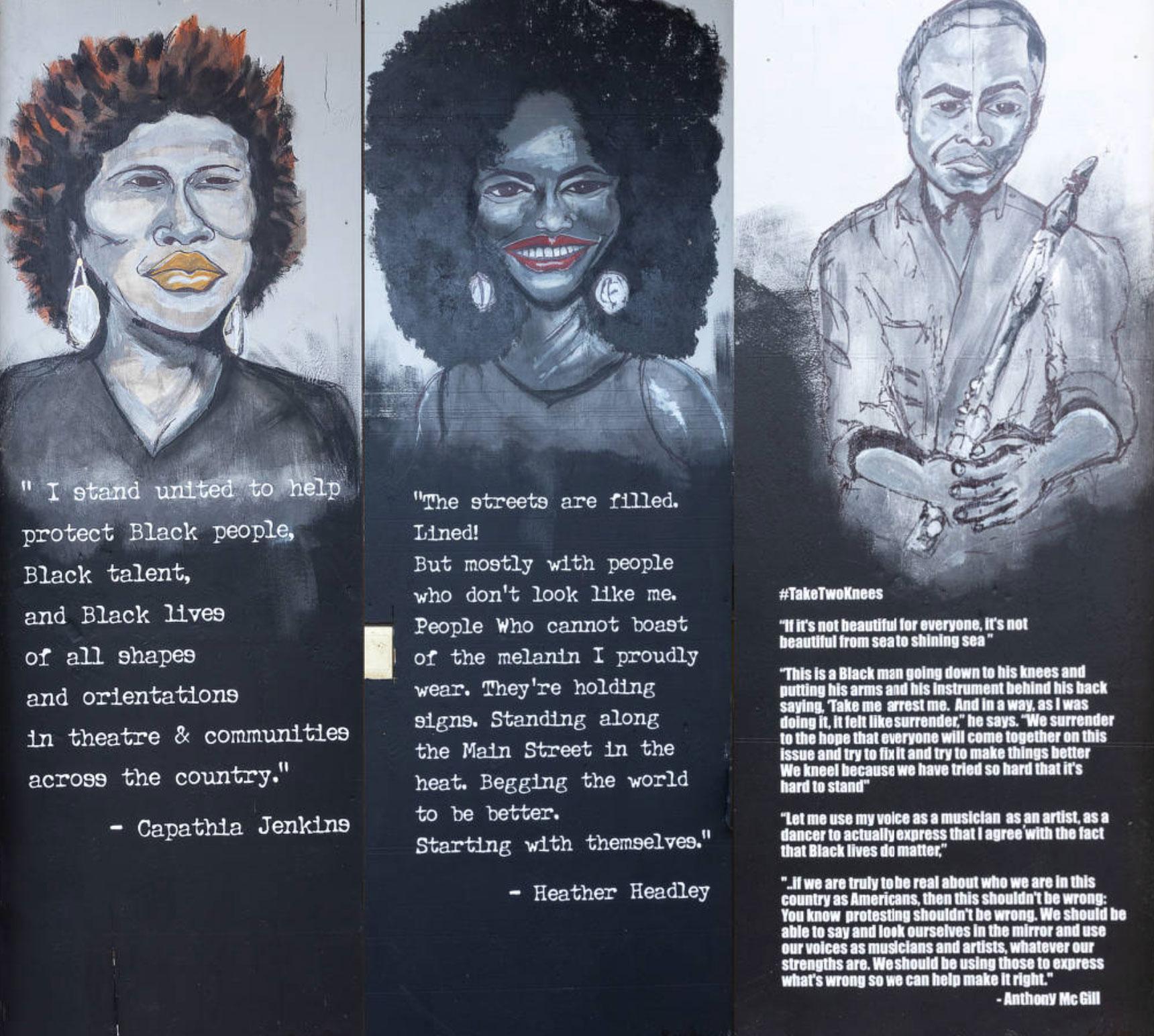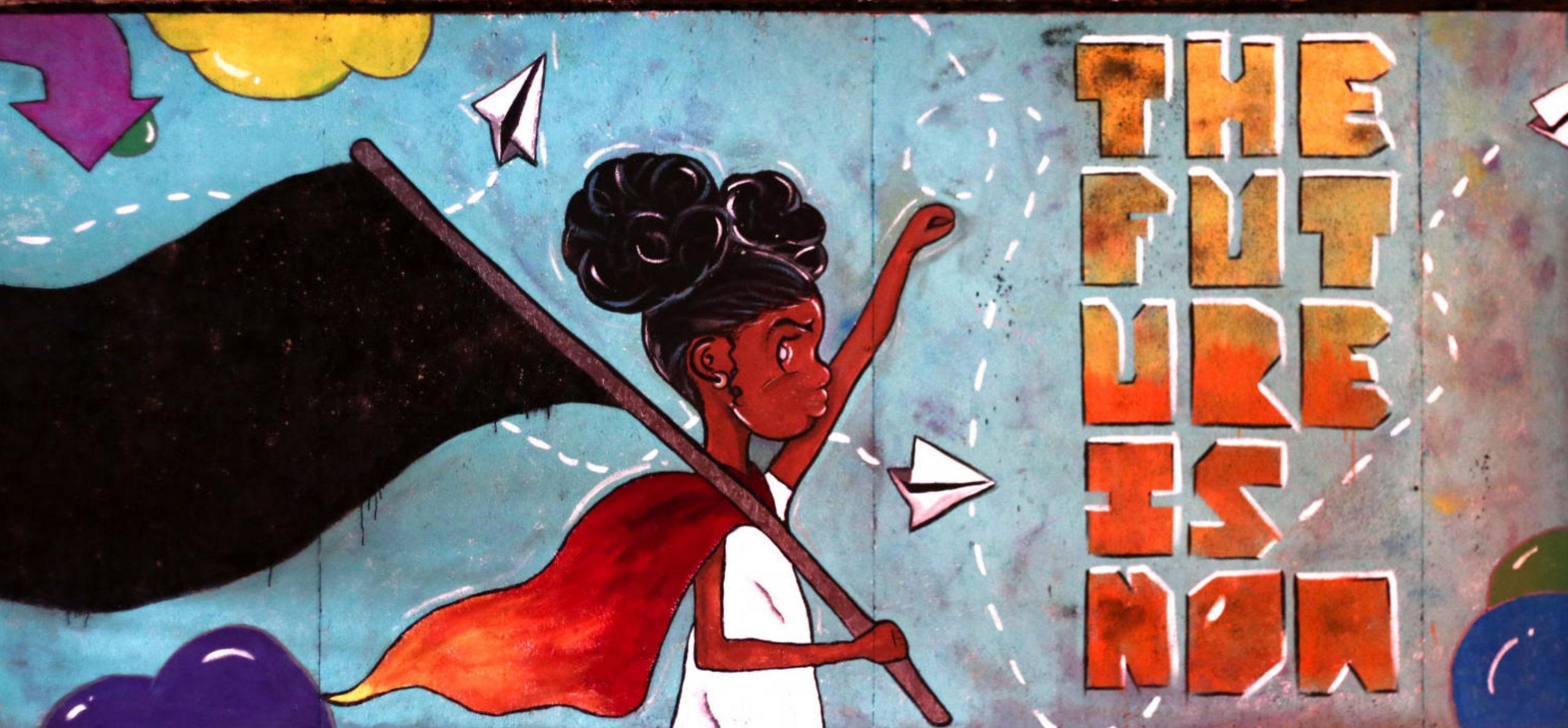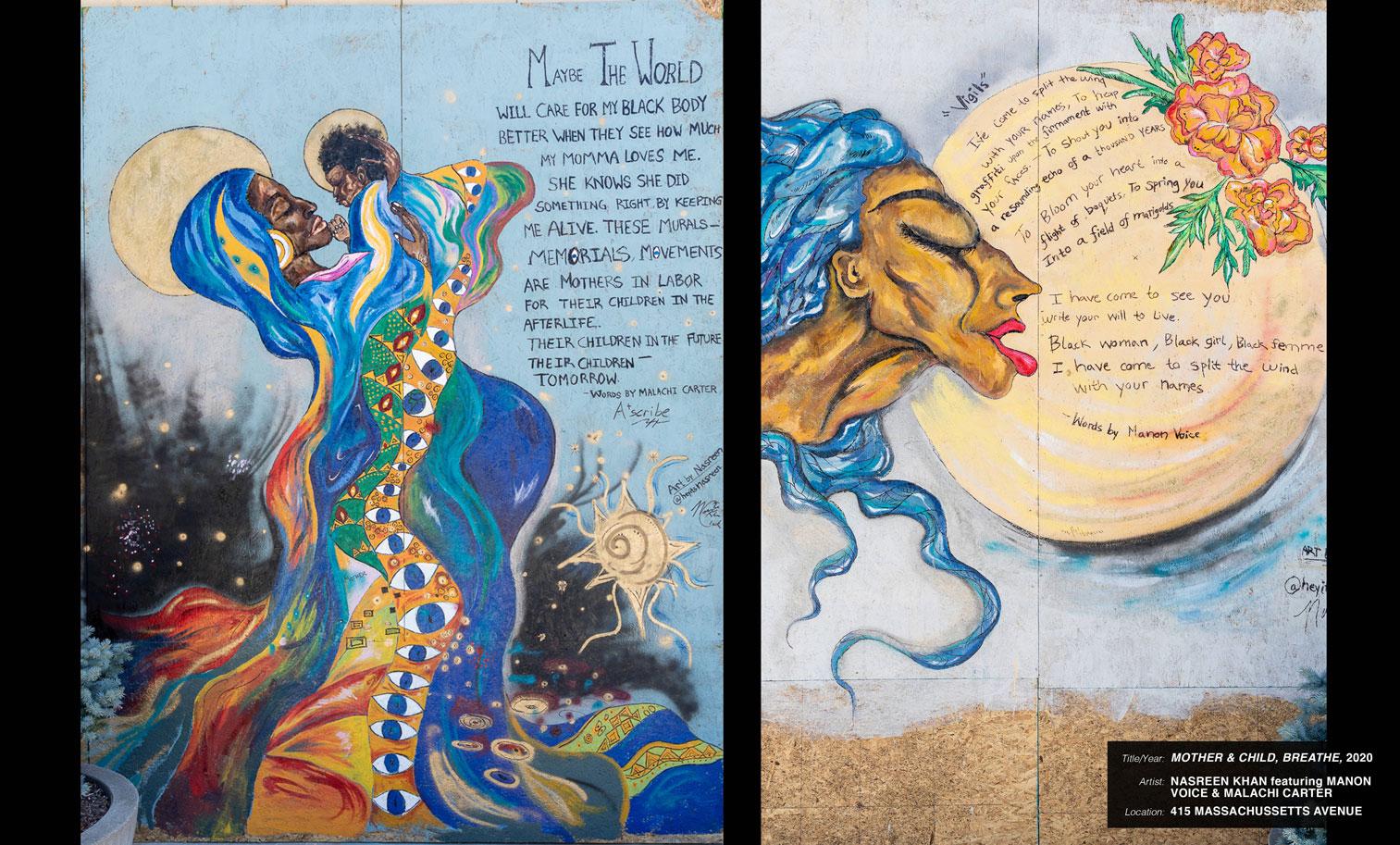The Murals for Racial Justice project was an immediate response to protests that erupted in downtown Indianapolis and other urban areas worldwide after the death of George Floyd in Minneapolis, on May 25, 2020. Protesters rose up against such deaths as Floyd’s and those of other Black citizens at the hands of police officers. They called for racial justice and an end to police brutality in Indianapolis and nationwide.
The Indy Arts Council, PATTERN, and St’ArtUp 317 Incubator teamed up to organize the project, with financial support from Glick Philanthropies. They commissioned 24 Black artists to create 22 temporary murals on storefronts that were boarded up in downtown Indianapolis following the 2020 summer protests.
The plywood used to board up the storefront windows proved unsustainable for long-term outdoor display of the artwork. To document the historic significance of the project, PATTERN produced high-quality images of the murals that are now available for study in the Indianapolis Public Library’s online repository Digital Indy: digitalindy.org. These images were also used to produce 3-foot-by-5-foot vinyl banners that can be borrowed with a library card from the Indianapolis Public Library. Learn more about borrowing a mural banner: indypl.org.
The physical murals are no longer in their original locations. One is on view at Old City Hall. The Indiana State Museum acquired two of the murals for its permanent collection and worked with the Indy Arts Council to present these along with other murals in its 2021 exhibition, Response: Images and Sounds of a Movement. Many of the murals have gone back to the artist who created them, and several were destroyed.
While the murals provided an immediate space for artists and the Indianapolis community to share in their frustrations, grief, and hope, the project also sparked lasting change. Not only did the mural artists gain increased visibility and recognition for their work, but the project helped create a new space for Black artists to grow and be seen in Indianapolis.
Explore this exhibit by clicking on the images below to learn more about several of the murals and artists from the Murals for Racial Justice project.
